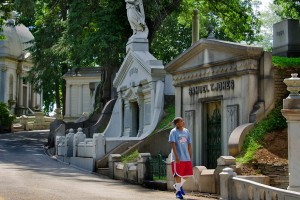Features: The Warren Commission, The Truth, and Arlen Specter: Part 1
All of this demonstrates the fixed direction of the Commission’s thinking: How to prove that a lone gunman firing from the sixth-floor window of the Depository could have committed the assassination.
Close study of the Zapruder films show that Kennedy’s right hand started to drop and his left hand had started to move up, as if beginning to clutch at his throat, at frame 200. Yet the Commission Report says: "It is probable that the President was not shot before frame 210, since it is unlikely that the assassin would have shot at him with a view obstructed by the oak tree. ." The assassin’s view, of course, was from that sixth-floor window.
The Zapruder films also show that there is no evidence of Connally being hit before frame 292 and that by frame 297 he is clearly grimacing and falling back onto his wife’s lap, But, says the Commission Report, Connally couldn’t have been hit after frame 240 because "he remained turned too far to his right." "Too far" for what? To have been hit by a bullet coming from the sixth-floor window of the Depository.
Connally’s right wrist wound was another problem for the Commission. His forearm would have had to be in a position below his right nipple and his body twisted so that the puncture wound in his left leg could be accounted for. The films give no evidence he was in such a position until he began to turn "too far" to his right.
Nevertheless, the Commission concluded that Kennedy reacted immediately to a bullet which went cleanly through his neck without hitting bone, while Connally did not react immediately to the same bullet penetrating his chest, smashing a rib, shattering his wrist and puncturing his thigh. This despite the fact that Dr. Robert Shaw of Parkland Hospital, who treated Connally, described his wound as "painful and shocking . . . a sucking wound of the chest" which would not allow him to breathe if he hadn’t instinctively covered it with his arm.
More than anything else, it is the question of the nature and characteristics of both Kennedy’s and Connally’s wounds which raises the gravest doubts about the Warren Commission’s findings.
The principal conclusions of the Report — in fact, every assumption made in Specter’s area that eventually leads to the sixth-floor window of the Depository — was based on a description of the wounds in the final autopsy report submitted by the doctors at the Naval Medical Center in Bethesda.
Every Commission exhibit regarding the location and nature of the wounds suffered by Kennedy and Connally — including the key charts and drawings showing the direction and path of the bullets — were produced by artists
solely on the basis of the description in the autopsy report or from verbal directions from Dr. James Humes, the senior pathologist at the Medical Center who performed the autopsy.
Neither the Commission nor Specter ever saw any photographs or x-rays which would have corroborated the autopsy report.
This despite the fact that they existed and that they would have been considered essential, vital and prime evidence in any court in the country.
This despite the fact that evaluation of all other evidence concerning the assassination had to be considered in relation to the specific characteristics of the wounds.
This despite the fact that there was a good deal of hard-core evidence which directly contradicted the final autopsy report.
Arlen Specter never saw the most important pieces of evidence directly related
to his area of investigation.


